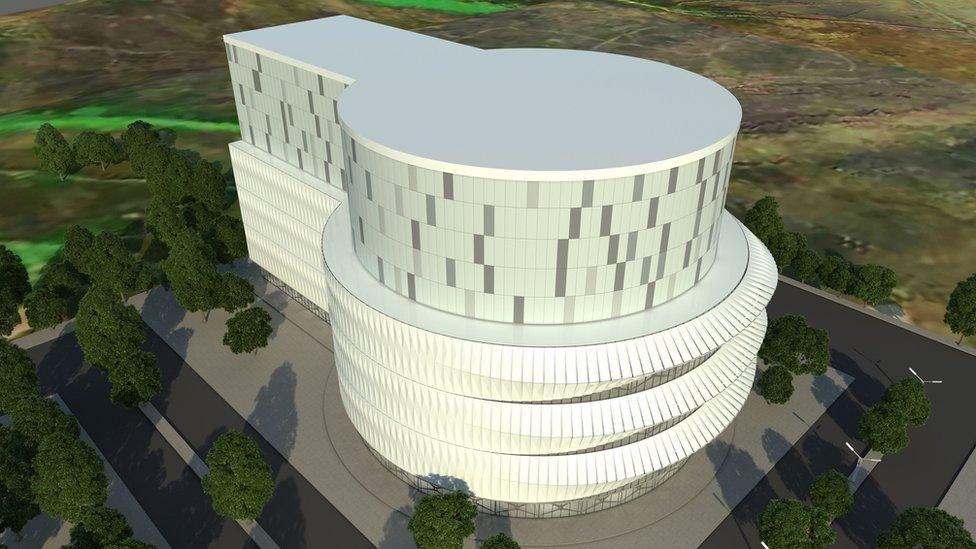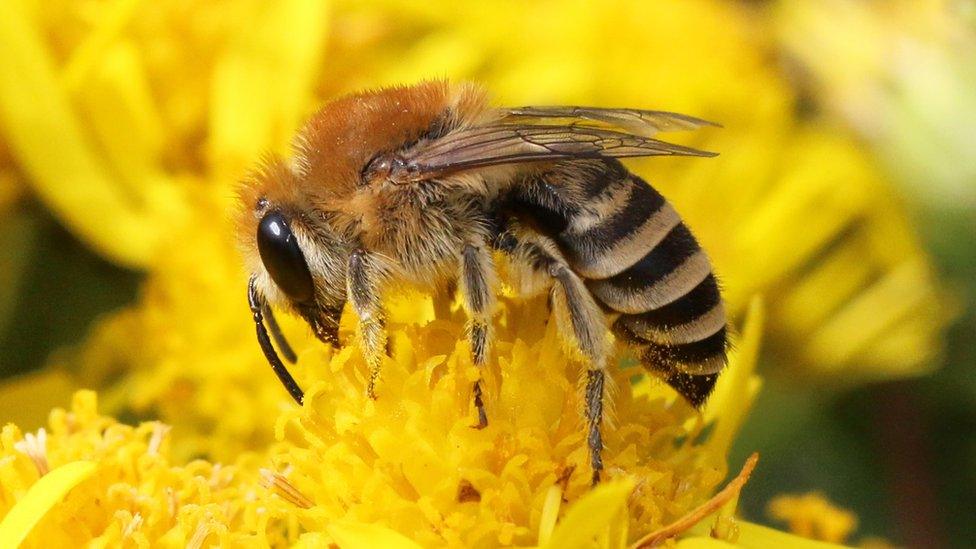Ardeer peninsula: Call to protect abandoned wildlife haven
- Published

The Ardeer peninsula has been reclaimed by nature since the ICI factory closed in the 1990s
An abandoned area, which was once home to Scotland's largest explosives factory, should be given special status to protect its diverse and fascinating wildlife, campaigners have said.
The Ardeer peninsula, between Irvine and Stevenston, contains dunes, grassland, woodlands and wetlands.
It is also home to more than 1,000 invertebrate species and rare plants.
The Ardeer Action group said it should become a Site of Special Scientific Interest (SSSI).
The group, made up of local community groups and national organisations such as RSPB Scotland, Buglife, the Scottish Wildlife Trust and Plantlife Scotland, has written an extensive report on why the area should become a SSSI.
Unique dune habitats
In a signed letter to Scottish government agency NatureScot, the action group said the area was facing "growing development pressure".
It said the site was apparently already suffering from ongoing sand extraction which was damaging its unique dune habitats.
There are also a number of large and potentially damaging developments proposed including housing, wind turbines, a golf course and even a nuclear fusion power plant.
The action group said the Garnock Estuary was home to 99 species of invertebrates of "conservation concern" and some other species found nowhere else in Scotland.
The estuary has also been hailed as one of the best breeding bird sites on the Lower Clyde coast.

Ardeer - the industrial site reclaimed by nature

The area includes grassland, open heath and woodland
The Ardeer Peninsula is approximately 3km (1.9 miles) long and extends southeast from Stevenston towards Irvine in North Ayrshire.
In 1871, Alfred Nobel - the Swedish chemist who invented dynamite - set up a factory to manufacture explosives, which grew to employ 13,000 people at its peak.
Nobel described the area as containing everlasting bleak sand dunes with no buildings.
The factory was taken over and operated by ICI in the 1920s and closed in the 1990s.
Since the site's final industrial decline, nature has been left to reclaim the area, making it one of the most important sites for wildlife in the UK.
An attempt to regenerate the area at the turn of the Millennium saw the Big Idea science centre open on the peninsula, but it closed after just three years and remains visible across the broken bridge from Irvine harbour.

Tremendous variety
Bruce Philp, from the Ardeer Action Group, told BBC Radio's Good Morning Scotland programme: "It is one of the most diverse and fascinating wildlife sites in Scotland.
"It is tremendously diverse and that diversity of habitat is reflected in a tremendous variety of wildlife."
Because of its industrial past, the area is not officially recognised as a wildlife site.
In fact, there is a special development order dating back to 1953, which means planning permission is not required for development and activities in the area.
Mr Philp hopes this special order can be revoked but said that even under normal planning rules the area would be at risk from developers.
'Over-riding national interest'
He said: "The main problem is that the area needs to be recognised officially as being important.
"The planning process takes into account whether or not somewhere is recognised as being of wildlife importance and at the moment there is nothing in relation to the area which highlights the fact that it is an important wildlife site."
He said that if it was an SSSI there could not be development unless there was an over-riding national interest.
A NatureScot spokesperson said: "We are currently assessing the case and considering how it might contribute to our ambitions to protect 30% of Scotland's land and sea for nature by 2030. A response will be provided in due course."
A North Ayrshire Council spokesman said the nuclear fusion plan had the potential to play an important part in meeting world's future energy needs as well as tackling the climate crisis.
It said: "We remain absolutely committed to ensuring everyone's voice is heard and, if Ardeer is chosen, the full regulatory processes will then follow."
- Published14 October 2021

- Published27 April 2018
